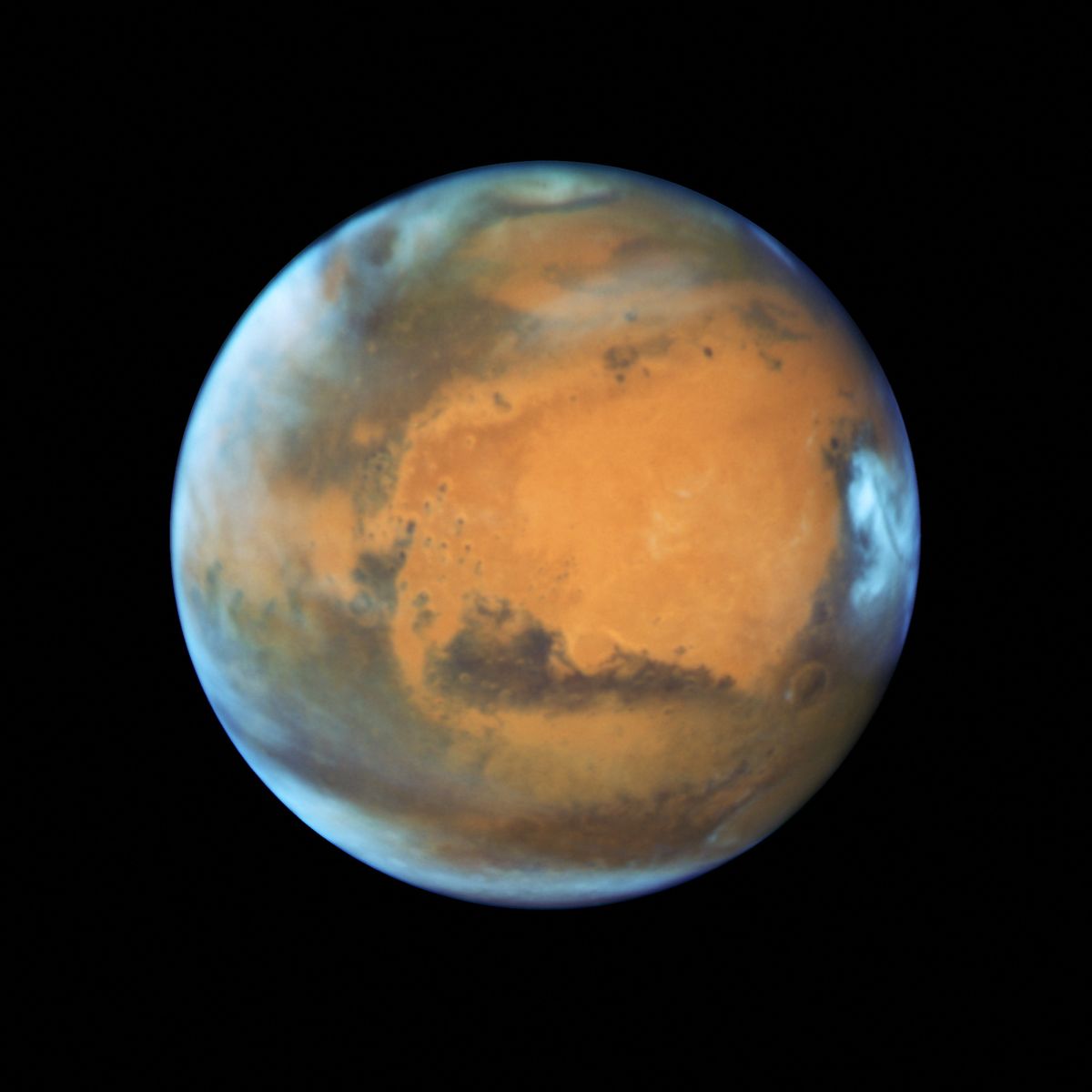Chinese scientists invent a robot that can create oxygen on Mars
This AI system is able to analyze minerals found in meteorites on Mars and then figure out the chemicals needed to produce oxygen.

A few minutes every morning is all you need.
Stay up to date on the world's Headlines and Human Stories. It's fun, it's factual, it's fluff-free.
The backstory: Space agencies all over the world are racing to get humans farther and farther into space. One of the major goals that these space programs have is to land a human on Mars. But not only do we have to get a person off the Earth and to this other world– it’s 225 million kilometers away.
Experts say that the best time to send a crewed mission just to orbit Mars would be in 2033. That year, there will be a rare planetary alignment that will make it easier to reach Mars and Venus on the way back. And the first crewed landing could happen as soon as 2037. But we also have to make Mars liveable for that person. First thing’s first – making the air breathable. So, what’s the best way to make Mars resources oxygen-rich?
More recently: Back in September, we reported that NASA had successfully completed its MOXIE initiative on Mars, which was able to produce oxygen from the atmosphere right there on the Red Planet. Basically, it pulled carbon dioxide molecules from the atmosphere, and then it separated the oxygen atoms from the carbon atoms. It was actually more efficient and effective than scientists estimated it would be, proving to be a leap forward toward a liveable Mars. Is this the most effective and efficient way to do this, though? Some scientists think that we should turn to recently discovered ice deposits on Mars instead.
The development: In new research published in Nature Synthesis, scientists from the University of Science and Technology of China (USTC) revealed another method for creating breathable air on Mars. And their new technology experiments relied on an artificial intelligence (AI) “chemist” robot. This AI system is able to analyze minerals found in meteorites on Mars and then figure out the chemicals needed to produce oxygen. Next, it completes experiments "without human intervention" to actually generate that oxygen. By taking and combining oxygen evolution reaction (OER) catalysts that can be used to generate oxygen from ice deposits on Mars, the AI system completes the first step in a process called electrochemical water oxidation, which is essentially the process of breaking down the frozen water on Mars into its specific molecules and atoms. This process is powered by these OERs.
The scientists ran the system for six weeks, and it ended up performing at breakneck speeds. During this time, the system selected, linked and tested 243 of those different OER molecules. Based on this system prototype, the researchers say that the system only needs 15 hours of solar irradiation to make enough oxygen for human survival. And, it can reportedly work “continuously for years.”
Key comments:
“In the future, humans can establish an oxygen factory on Mars with the assistance of an AI chemist,” said Professor Jiang Jun from USTC, who led the research team along with two other professors. “This breakthrough technology brings us one step closer to achieving our dream of living on Mars.”
“If you think about the challenge of going to Mars, you have to work with local materials,” said Andy Cooper, a chemist at the University of Liverpool, UK. “So I can see the logic behind it.”




Comments ()